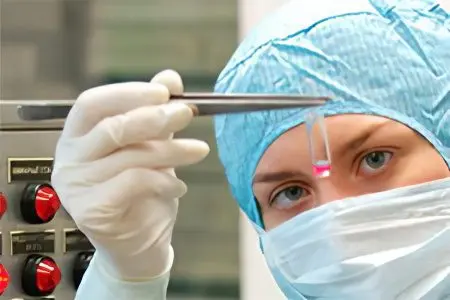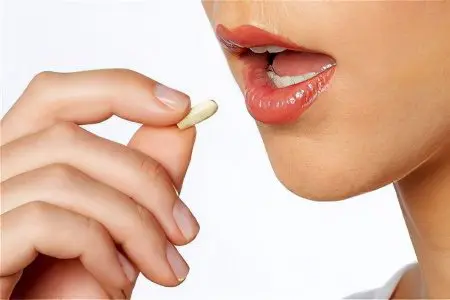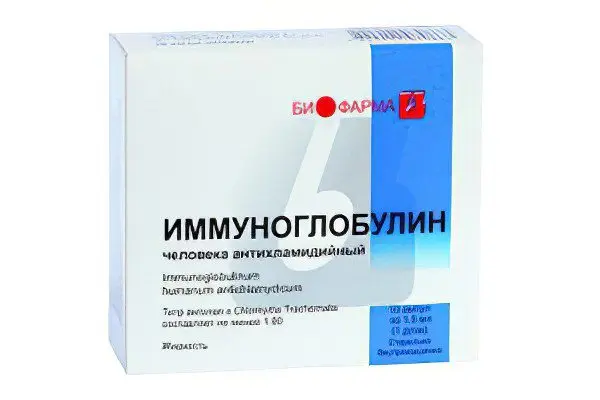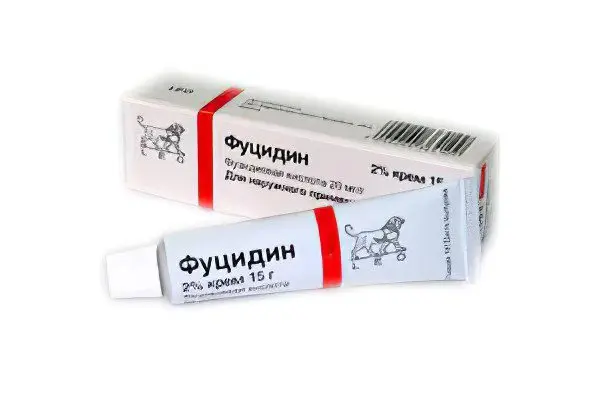Contents

The human body can serve as a home for thousands of microbes and bacteria, and such a neighborhood does not necessarily end in disease. The immune system reliably protects us, restraining the activity of uninvited guests and forcing them to follow the rules of good manners. Staphylococcus is no exception; it is normally found in about a third of the world’s population, but does not manifest itself in any way for the time being.
Weakened immunity, banal hypothermia, or the presence in the body of another infection against which antibiotics were used are the reasons why staphylococcus can go on the offensive. Therefore, it is important to understand two things: you can not be treated with antibiotics in case of the slightest ailment or cold, and it is simply pointless to use them against staphylococcus aureus to preempt. You still won’t get rid of carriage, but introduce your staphylococcus aureus to antibacterial drugs and nullify their effectiveness in the future, when they may really be needed.
The only reasonable measure to prevent staphylococcal infections is local sanitation of the skin, mucous membranes and upper respiratory tract during the cold season, as well as taking drugs that strengthen the immune system. The appointment of antibiotics is justified only in the case of severe, life-threatening diseases: pneumonia, endocarditis, osteomyelitis, multiple purulent abscesses on the skin and soft tissues, boils on the face and head (in close proximity to the brain). But before choosing an antibiotic against staphylococcus, a qualified doctor always performs a bacterial culture.
In a sanitary epidemiological station, a dermatovenerologic dispensary or a medical office of a specialized specialist (ENT, dermatovenereologist, gynecologist, urologist, pulmonologist, gastroenterologist, infectious disease specialist), a bacterial culture is taken from the site of staphylococcal infection. This may be a swab from the throat, a purulent abscess on the skin, vagina or urethra, as well as a sample of blood, sputum, urine, saliva, gastric juice, semen and other bodily fluids.
The resulting material is placed in a nutrient medium, after a while the colony of staphylococci multiplies, and the laboratory assistant can determine what type the pathogen belongs to and what antibiotics it is sensitive to.
The culture result looks like a list, in which one of the letters stands next to the names of all topical antimicrobials:
S (susceptible) – sensitive;
I (intermediate) – moderately sensitive;
R (resistant) — resistant.
Among the antibiotics from the “S” or, in extreme cases, “I” group, the attending physician chooses a drug with which the patient has not treated any disease over the previous few years. So there are more chances to succeed and avoid the rapid adaptation of staphylococcus to the antibiotic. This is especially important when it comes to the treatment of protracted and often recurrent staphylococcal infections.
antibiotics and staphylococcus aureus
In fact, there is only one objective reason for using antibiotics against such a resistant and flexible pathogen as staphylococcus aureus – the expected benefit will outweigh the inevitable harm. Only in the case when the infection has engulfed the entire body, entered the bloodstream, caused a fever, and the natural defenses are not enough to defeat the disease, one has to resort to antibiotic therapy.
But there are as many as three good reasons to refuse antibiotics in the treatment of staphylococcus aureus:
To cope with some types of pathogen, for example, with Staphylococcus aureus, only cephalosporins of the second or third generation, semi-synthetic penicillins (oxacillin, methicillin), and the most powerful modern antibiotics (vancomycin, teicoplanin, fusidine, linezolid) can cope. Resorting to extreme means is increasingly necessary, because over the past 5-10 years, staphylococci have mutated and acquired the enzyme beta-lactamase, with which they successfully destroy cephalosporins and methicillin. For such pathogens, there is the term MRSA (methicillin-resistant Staphylococcus aureus), and they have to be destroyed by combinations of drugs, for example, fusidine with biseptol. And if the patient used antibiotics uncontrollably before the onset of an extensive staphylococcal infection, the pathogen may be insensitive;
No matter how effective the antibiotic is, in practice the effect of its use against staphylococcus is almost always temporary. For example, with furunculosis, after successfully stopping the infection in 60% of patients, the disease recurs, and it is no longer possible to cope with it with the same drug, since the pathogen has adapted. It is obvious that such a price is worth paying only for “getting out of the peak”, when it is simply impossible to stabilize the condition of a patient with a staphylococcal infection without an antibiotic;
Antibiotics do not choose victims – in addition to the bacteria against which you use them, they destroy other microorganisms, including beneficial ones. Long-term treatment with antibacterial drugs almost always provokes dysbacteriosis in the gastrointestinal tract and urogenital area, and also exacerbates the risk of activation of other infections present in the body in the form of carriage.
Is it possible to completely get rid of staphylococcus aureus?

Let’s just say, no, you can’t. Only in very rare cases, when staphylococcus fell on a small area of the skin, and the human immunity was activated for some reason, macrophages manage to cope with the uninvited guest, and then they talk about “transient carriage of staphylococcus.” If such a situation is discovered, it is by pure chance. More often, the pathogen manages to gain a foothold in a new place, especially if the contact was extensive (swimming in an infected reservoir, using infected clothing, bed linen, towels). Acquired in a hospital, kindergarten, school or summer camp, staphylococcus usually settles in the body for life.
Why does the immune system of a healthy child or adult not get rid of this dangerous bacterium? Because there are no objective reasons for that, as long as the carriage does not turn into a disease. Staphylococcus, modestly sitting in a corner, does not arouse any interest in the immune system, leukocytes and macrophages do not declare a hunt for it, and the necessary antibodies are not produced in the blood. But what to do if, for example, a child has staphylococcal tonsillitis every autumn-winter, or a girl who knows about the presence of a harmful bacterium in her body is planning a pregnancy?
In these cases, it is necessary to resort to immunostimulating therapy and sanitation of accessible problem areas: pharynx, nasopharynx, skin, vagina. Such measures will not allow you to get rid of staphylococcus forever, but will significantly reduce the number of its colonies and reduce the risk of carriage becoming a dangerous disease.
What is the sanitation of staphylococcus?
Preventive sanitation is a very effective measure, which is recommended to be regularly resorted to by all carriers of staphylococcus aureus. Employees of children’s educational and medical institutions take swabs from the nose twice a year, and if the result is positive, sanitation is carried out, and then the analysis is taken again, trying to achieve a complete absence of staphylococcus aureus in the upper respiratory tract. This is very important, because this is the only way to insure against the spread of the pathogen by airborne droplets.
If you or your child experience relapses of tonsillitis, furunculosis and other purulent-inflammatory diseases every year, the cause of which (according to the results of the tests, and not based on your guesses) is staphylococcus aureus, it is worth replenishing the home first-aid kit with funds for local sanitation. With the help of these drugs, gargling, instillation of the nose, laying cotton swabs in the nasal passages, irrigation or douching of the genital tract, wiping and lubricating the skin or mucous membranes, depending on the localization of the carrier, are performed. For each case, you need to select the appropriate version of the drug and strictly follow the instructions.
Here is a list of all effective solutions and ointments against staph:
Retinol acetate (vitamin A) oil solution;
Electrolysis solution of sodium hypochlorite;
Furacilin solution;
Decoction of St. John’s wort;
Aloe Vera Gel;
Ointment Bactroban;
Hexachlorophene ointment;
Chlorophyllipt;
Lysozyme;
Rivanol;
Boric acid;
Lugol’s or iodine solution;
Potassium permanganate;
methylene blue;
Octenisept;
Fukortsin (Castellani liquid).
12 best drugs for the treatment of staph

We have prepared for you a hit parade of the twelve most effective and safe means by which modern specialists treat staphylococcus aureus. But let this information not serve as a reason for self-treatment, because only a qualified doctor, after a thorough diagnosis, can prescribe a drug that is right for you and will not cause unwanted side effects. It is especially important to show a child suffering from a staphylococcal infection to a good doctor and not be too lazy to take the necessary tests.
Bacterial lysates
The group of lysates includes drugs that are a crushed multibacterial culture. Once in the body, particles of bacteria (including staphylococcus) cannot cause a full-scale infection, since their cellular structure is disturbed. But they can provoke an immune response and the production of antibodies. Lysates have many advantages – safety, lack of addiction, contraindications and side effects, the ability to take them as needed, and not follow a fixed course of treatment. The only drawback is the high cost. The most popular lysates for the treatment of staphylococcus: imudon, respibron, bronchomunal, IRS-19 spray.
Staphylococcal toxoid
This drug is a toxin (poisonous waste product) of laboratory-grown staphylococci. The toxin is purified and neutralized, and then placed in 1 ml ampoules and packaged in boxes of 10 ampoules. This volume of staphylococcal toxoid is enough for one course of treatment, the result of which will be the formation of stable immunity in an adult. Toxoid is contraindicated for children.
The introduction of the drug is carried out in a hospital, for ten days, alternately under the right and left shoulder blades. The nurse carefully monitors the patient’s condition during the first 30 minutes after the injection. Allergic reactions are possible, up to anaphylactic shock. During the entire course of treatment, subfebrile body temperature, redness and swelling of the skin at the injection site of the toxoid can be observed.
Staphylococcal antiphagin (vaccine)
Unlike toxoid, the vaccine is a complex of ready-made heat-resistant antigens to all possible types of staphylococcus. It is also sold in 1 ml ampoules and cartons of 10 ampoules. Vaccination against staphylococcus is allowed from the age of six months, however, exceptions are allowed, the main thing is that the baby’s body weight is at least 2,5 kg. Staphylococcal antiphagin causes the formation of specific immunity, which may be lost over time, so annual revaccination is recommended. In Russia, all these measures are not included in the list of mandatory vaccinations, but at the request of the parents, the child can be vaccinated against staphylococcus aureus.
CIP (Complex Immunoglobulin Preparation)
This medicine for the treatment of staphylococcus and other bacterial infections is made from donated blood by drying. CIP is a protein powder containing three types of antibodies (IgA (15-25%), IgM (15-25%), IgG (50-70%) and packaged in 5 ml glass ampoules. It is this drug that best copes with staphylococcus, because it contains the largest number of antibodies of the IgA and IgM class, compared with other immunoglobulin drugs.
Antibodies of the IgM class effectively destroy staphylococci, shigella, salmonella, escherichia and other pathogens of intestinal infections, antibodies of the IgA class prevent the reproduction and adhesion of bacteria to the cells of the body, and antibodies of the IgG class neutralize toxins and contribute to the destruction of staphylococcus by macrophages – fighters of our immunity. Thus, CIP has several advantages at once: versatility, complex action, convenient oral administration and the absence of contraindications.
Human anti-staphylococcal immunoglobulin

It is also a protein powder extracted from donated blood, but it differs from CIP in its narrow specialization: it contains antibodies only to staphylococcus alpha-exotoxin. Taking such a drug, a patient with staphylococcal infection receives temporary help from a donor. As soon as the intake of immunoglobulin is stopped, the effect will also end, because such treatment does not force the body to produce its own antibodies to staphylococcus aureus, but only compensates for their absence. Intravenous administration of donor anti-staphylococcal immunoglobulin temporarily saves in severe diseases, such as sepsis, endocarditis or pneumonia in the background of AIDS.
Aloe vera
Preparations based on aloe extract (capsules, gels, injection solutions, ointments, syrups) have proven themselves not only in the treatment of staphylococcus aureus. The high biological activity of aloe vera allows you to strengthen the immune system, cope with an infection of any localization and quickly alleviate the patient’s condition. For example, subcutaneous administration of an aloe solution for staphylococcal furunculosis reduces swelling in a few days, neutralizes pain and stops the acute inflammatory process.
But, like any powerful natural stimulant, aloe vera has contraindications. It is not recommended for pregnant women, as well as women with heavy menstruation, endometriosis and polycystic, as aloe increases blood circulation and can provoke internal bleeding. It also increases the activity of the endocrine glands, which is very dangerous for stomach ulcers and pancreatitis. In short, a comprehensive assessment of the state of the body of a patient with a staphylococcal infection is necessary before making a decision on treatment with aloe vera.
Chlorophyllipt
Another medicinal plant that can cope with staphylococcus aureus is eucalyptus. An alcohol solution (from 0,25 to 1% concentration) is made from the juice of eucalyptus leaves for internal and local use, as well as an oil solution (2% concentration) for intravaginal use in staphylococcal cervical erosion.
A weak alcohol solution of chlorophyllipt is added to water and drunk for intestinal infections, as well as instilled and placed in the nose, gargled with a sore throat, put enemas – that is, they are used to sanitize the mucous membranes. A more concentrated preparation is suitable for treating skin affected by abscesses, ulcers, boils and fistulas. In rare cases (with sepsis, peritonitis, pleural empyema, lung abscess), chlorophyllipt is administered intravenously or directly into the body cavity.
Before the first use, an allergic reaction test is always carried out: the patient drinks half a glass of water with 25 drops of chlorophyllipt dissolved, and if no negative effects are observed during the day, staphylococcus can be treated with this drug. Chlorophyllipt is prescribed only for adults and children over twelve years of age.
Mupirocin
This is an international non-proprietary name for an antibiotic that acts as an active ingredient in several medicinal ointments: bonderme, supirocin, baktroban. Mupirocin has a very wide range of applications; it is active against staphylococci, gonococci, pneumococci and streptococci, including aureus and methicillin-resistant.
With the help of ointments based on mupirocin, local treatment of skin and nasal staphylococcal infections is carried out. Two types of ointments are produced with different concentrations of the antibiotic, separately for the skin, separately for the mucous membrane. Theoretically, it is possible to lubricate abscesses, ulcers and boils with any type of ointment, but only a specially designed drug should be put into the nose. Ointments with mupirocin can be used from the age of six, they very rarely cause side effects and allergic reactions, while doing an excellent job with the local treatment of staphylococcus aureus.
Baneocin
This is also an ointment for external use, the active component of which is a tandem of two antibiotics: neomycin and bacitracin. Both antibacterial agents are active against staphylococci, but together they work better, cover a larger number of strains, and addiction develops more slowly.
Baneocin is almost not absorbed into the blood when applied topically, but it creates a very high concentration of antibiotics in the skin, so it copes well with abscesses, ulcers and boils caused by staphylococcus aureus. However, like all antibiotics of the aminoglycoside group, bacitracin and neomycin are dangerous for their side effects: hearing and vision impairment, kidney dysfunction, impaired circulation of nerve impulses in the muscles. Therefore, the use of baneocin is recommended only for the treatment of staphylococcal infections that affect no more than one percent of the skin surface (about the size of a palm).
Baneocin ointment is available without a prescription and is allowed for children, but is not recommended for pregnant and lactating women due to the risk of antibiotics entering the bloodstream and breast milk.
Fusidin

Fusidin, fusidic (fusidic) acid, sodium fusidate – all these are the names of one antibiotic, perhaps the most effective against most strains of staphylococcus aureus. On the basis of this drug, ointments with a two percent concentration (fucidin, fusiderm) are produced, which are intended for the local treatment of staphylococcus aureus. These ointments cannot be applied to the mucous membranes, and even on the skin they can cause irritation and redness, but usually after a week of regular use, the staphylococcal infection is localized, and the inflammation heals completely.
Fusiderm cream is one of the best remedies for acne on the face caused by staphylococcus aureus. With long-lasting red weeping acne, it is imperative to take a scraping for analysis, and if the doctor detects strains of staphylococcus, Fusiderm will be the best choice for treatment, which usually lasts 14 days, and in 93% of cases ends with success.
Fusidin-based ointments can be used not only for adults, but also for children older than one month, since this antibiotic does not cause dangerous side effects and almost does not penetrate into the blood when applied topically. However, it is usually not advised to expectant and nursing mothers, since the effect of fusidine on a child when it enters the circulatory system has not yet been sufficiently studied.
Galavit
Strictly speaking, Galavit is not indicated for the treatment of staphylococcus aureus, but its application in practice allows us to hope for success in the fight against resistant strains. Galavit is a relatively new immunomodulator and a rare guest on the shelves of our pharmacies. Western European clinical studies have proven that it has two actions at once: immunostimulating and bactericidal, and this in itself is a big breakthrough.
The immunomodulatory effect of Galavit is due to its ability to slow down too active macrophages so that they have a longer destructive effect on pathogens, including staphylococcus aureus. In other words, this drug allows our body to use its defenses more rationally and fully.
Galavit is available in the form of lingual tablets, injection solution and rectal suppositories, so it is convenient to use it for the treatment of staphylococcal infections of any localization. The drug is approved for use by adults and children over six years of age, but is not recommended for pregnant and lactating women, again, simply because of insufficient knowledge.
Staphylococcal infection and hormones
In conclusion, it would be reasonable to say a few words about the treatment of staphylococcus with hormonal drugs. Glucocorticoids, that is, synthetic derivatives of human corticosteroid hormones, quickly stop inflammation of any etiology. They violate the entire chain of natural reactions (a pathogen appeared – the body reacted – hormones were produced – an inflammatory process began – leukocytes multiplied – a purulent abscess appeared – pain and fever appeared). Drugs from the group of glucocorticoids (prednisolone, dexamethasone, triamcinolone and others) forcibly interrupt this scenario at the very beginning. But they do not destroy the cause of inflammation, but simply make the body not respond to the pathogen.
So what threatens the use of hormonal ointments for the local treatment of staphylococcus aureus? The fact that after the rapid suppression of the inflammatory process and the removal of pain, a real thunder will break out: hormones have scored a natural immune response, there are no antibodies to the pathogen, and now the body is completely unarmed face to face with the infection. Conclusion: treatment of staphylococcus with hormonal ointments is advisable only if it is a combined preparation containing also an antibiotic. And taking glucocorticoids orally with extensive staphylococcal lesions of the body, as with any other blood infection, is strictly prohibited.









